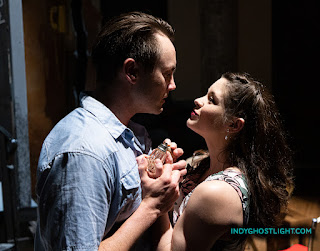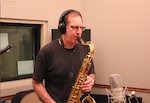Dance Kaleidoscope reaches back to 1997 for revival of Cole Porter tribute
The songwriting genius of Cole Porter has been acknowledged so widely for so long that it's no wonder it can share its magic readily with contemporary dance.
The jazzy rhythms and infectious, witty rhymes characteristic of the pride of Peru (Indiana) inspired David Hochoy to create "Cole!" in 1997 for Dance Kaleidoscope. The suggestion to the Hoosier newbie came from a DK board member and outstanding Indianapolis arts patron, the late Richard E. Ford.
The show's two acts — "Ol' King Cole" and "Cole Soul" — reflect Porter both in the era of his rise to the top of the songwriting heap as well as in his immortal viability as a "classic" who became subject to reworking in recent pop styles.
Cheryl Sparks' costumes and Laura E. Glover's lighting make each of these settings precise in vibrant, expressive ways. We are teasingly in the world of Paris nightlife in the first act. "Let's Do It" kicks things off, setting out before us the angular, thrusting, cheeky movement of popular dance styles that characterized the Jazz Age and influenced the strife-torn 1930s and '40s as well.
As seen Sunday in the conclusion of a two-performance run at the Tarkington in Carmel, the company looked rested and perky. It's poised to communicate in new ways to new audiences as several of its members will debut their own dance creations at the Indianapolis Theatre Fringe Festival this week.
In their artistic director's vision, DK's classic Cole Porter involves intricate teasing episodes, such as Caitlin Negron's flirtatious solo with three men in "It's De-Lovely." It also can take on grandeur, as in the statuesque configurations in "You're the Top," with its boundary-pushing pairing of four couples, plus Noah Trulock as a kind of master of the revels.
 |
| The glory of ensemble comes to the fore in "Cole Soul," Act 2 of "Cole!" |
Mariel Greenlee's solo in "I've Got You Under My Skin" had an edginess woven throughout its message of amorous devotion that suited the intensity of Josephine Baker's recorded performance in French and English. Soloist Brandon Comer, with the support of Jillian Godwin, Aleksa Lukasiewicz, and Caitlin Negron, made "Anything Goes" exuberant and suggestive at the same time, with its vocabulary of shimmies, shakes, flutters and twists.
The second act, with the sexy delicacy of that Parisian cabaret look replaced by form-fitting costumes of geometric modernism, allowed for such outside-the-box Porter renditions as David Byrne's percussive "Don't Fence Me In" and the sardonic wealth-worshipping of the Thompson Twins' "Who Wants to Be a Millionaire?"
Musically, the latter version was for me not "easy to love" (to quote the title of another Porter song used in the show). But the choreography's amoral grab-the-money-and-run flurry of activity may have represented the real values of the man who introduced the song (Frank Sinatra) more than his insouciant performance with Celeste Holm in "High Society." As much as he is also a romantic, Hochoy is dependably inspired to look askance at society's values, as he does likewise in this show in a delightful, street-people scenario for "Miss Otis Regrets" — the comic highlight of "Cole Soul."
The most poignant segment of Act 2 was Liberty Harris' solo, danced as if loaded with second thoughts, regrets and reminiscence, to "Ev'ry Time We Say Goodbye" (Annie Lennox's recording). It's not clear how much underlining of the song's farewell message was intended in this veteran dancer's showcase performance, but there was no way to avoid feeling it.
The finale — the only repeated song in the show — is Louis Armstrong's rendition of "You're the Top." In contrast with the recording of the song in the first half, this successful bid for applause focused on solo turns — concise and open-hearted — by the company. Its honest, unapologetic pizazz was entirely welcome. Porter's music revels in that quality, so why not also Hochoy's interpretation of it?



Comments
Post a Comment